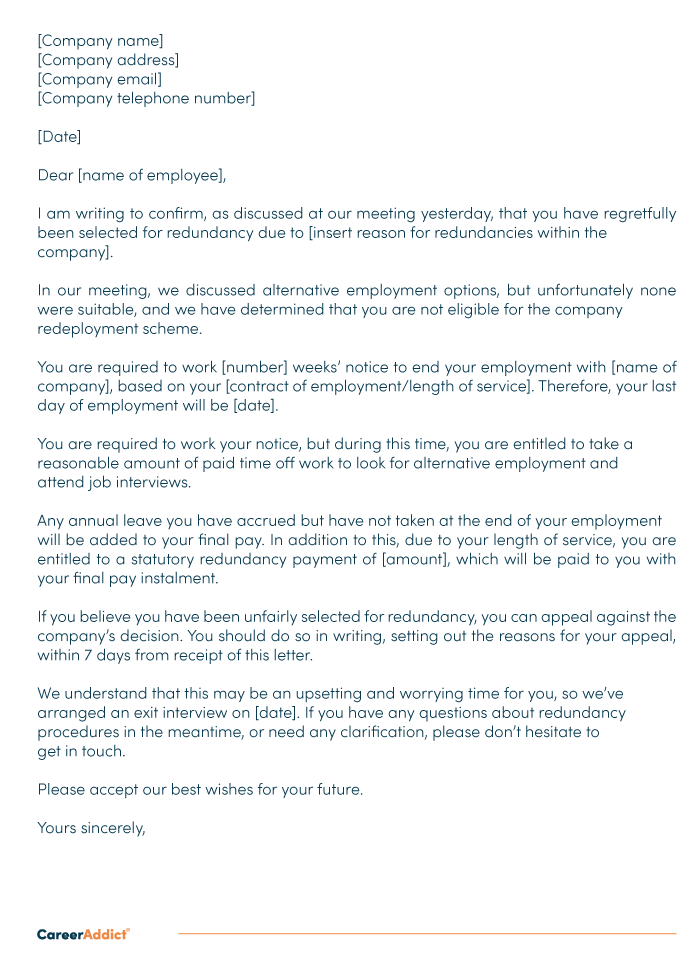Discovering the Operational Characteristics of Firm Redundancy and Its Long-Term Sustainability

Redundancy Strategies for Service Connection
In order to ensure nonstop procedures, companies must carry out effective redundancy techniques for company continuity. Redundancy in this context refers to the replication of critical parts or features within a system to mitigate the impact of possible failures. By integrating redundancy techniques, companies can boost their durability versus disturbances triggered by various elements such as natural disasters, devices failings, or cyber-attacks.
One common redundancy method is the application of back-up systems and information storage space remedies. This entails creating matches of vital data and systems that can be turned on in instance of a key system failing. In addition, companies can establish repetitive interaction networks and source of power to maintain connectivity and procedures during unpredicted events.
Furthermore, cross-training workers to execute multiple duties within the firm can work as an important redundancy approach. If essential workers are inaccessible due to disease or various other reasons, this makes certain that important jobs can still be brought out even. Generally, efficient redundancy methods are vital for companies to promote functional continuity and lessen the impact of prospective disturbances.
Impact of Redundancy on Organizational Resilience
Offered the crucial function redundancy techniques play in making sure organization continuity, exploring the influence of redundancy on organizational durability ends up being essential for comprehending the holistic operational dynamics of a company. Organizational resilience refers to an entity's capacity to adjust to disruptions, recuperate from troubles, and change when required while keeping core features. Redundancy, when purposefully executed, can considerably contribute to boosting an organization's durability despite unforeseen obstacles. By having backup systems, employees, or procedures in place, business can much better hold up against shocks and continue procedures with marginal disturbance.
In addition, redundancy can reinforce employee spirits and confidence, understanding that there are backup strategies in position to resolve unpredicted circumstances. This feeling of safety can lead to increased performance and a more favorable job environment. Furthermore, redundancy can foster advancement and creative thinking within a company as employees feel encouraged to take calculated risks, knowing that there is a safeguard to support them in situation of failure. Generally, the effect of redundancy on business durability is extensive, shaping the long-lasting sustainability and success of a business.
Balancing Performance and Versatility in Redundancy
Attaining a harmonious balance in between functional effectiveness and flexible versatility is a pivotal difficulty in the calculated deployment of redundancy within organizations. Too much versatility without a solid operational foundation can result in ineffectiveness and disparity.
To stabilize performance and flexibility in redundancy preparation, organizations must thoroughly evaluate their functional demands, market characteristics, and tactical goals. Executing lean techniques can improve effectiveness by simplifying processes and getting rid of waste, while fostering a culture of adaptability and continual improvement can improve adaptability. Additionally, purchasing cross-training programs and robust communication channels can aid grow a functional labor force efficient in taking care of varied tasks during durations of change. Inevitably, locating the right equilibrium between performance and versatility is important for building a lasting and durable organization when faced with unpredictability.
Long-Term Sustainability Through Redundancy Planning
To make sure long-lasting viability and stability, organizations must purposefully straighten their redundancy preparation with long-term sustainability objectives, thereby integrating operational efficiency with adaptive versatility. Lasting sustainability with redundancy preparation entails even more than simply short-term cost-cutting steps. It requires a thorough critical strategy that prepares for future challenges and opportunities. Companies need to see redundancy not as a responsive service to prompt problems yet as a positive approach for long-lasting success. By integrating redundancy planning with sustainability objectives, companies can develop a resilient structure that can hold up against different market fluctuations and inner adjustments.

Proactive Measures for Lasting Business Workflow
Just how can business proactively improve their operational sustainability for long-term success? Applying positive procedures is essential for business intending to make certain sustainable procedures. One vital method is to buy innovation and development to streamline processes, decrease waste, and remain competitive out there. Taking on lasting practices such as reducing power usage, decreasing carbon footprint, and enhancing resource utilization can not just benefit the environment however additionally result in set you back financial savings over time.
In addition, cultivating a culture of continuous enhancement and knowing within the organization can enhance adaptability to changing market problems and customer demands. Encouraging worker involvement in decision-making procedures and offering chances for expert advancement can enhance morale, efficiency, and overall performance. Developing clear goals, keeping track of crucial performance indicators, and on a regular basis reviewing progression are vital components of positive sustainability management.
Collaborating with providers, customers, and various other stakeholders to advertise lasting methods throughout the supply chain can create a causal sequence of positive impact - redundancy pay if company goes bust. By taking proactive steps towards operational sustainability, business can develop durability, drive technology, and safeguard their long-lasting success in an ever-evolving organization landscape
Conclusion

In the realm of business monitoring, the calculated release of firm redundancy stands as a critical yet complex method that requires a fragile balance in between functional efficiency and long-term feasibility. By exploring the operational characteristics that underpin firm redundancy and assessing its broader effects for business strength and adaptability, a nuanced understanding of just how redundancy strategies can shape the future trajectory of a business starts to unfold.Given the vital role redundancy strategies play in making sure service continuity, exploring the influence of redundancy on business strength comes to be important for comprehending the alternative functional dynamics of a business. On the whole, the effect of redundancy on organizational durability is extensive, forming the long-term sustainability and success of a company.
In verdict, understanding the operational characteristics of company redundancy is vital for guaranteeing long-lasting sustainability.
Comments on “Who Pays Redundancy Money? Understanding Company Responsibilities in the UK”